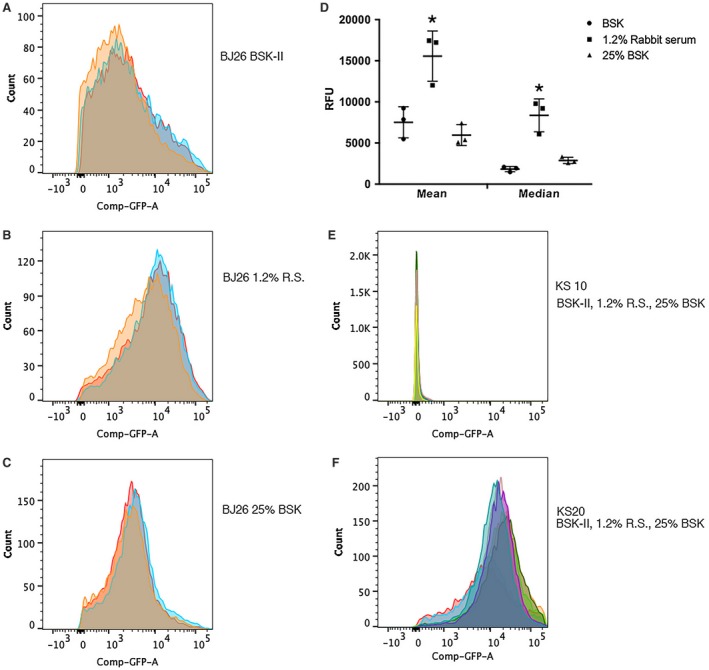Figure 1.

Transcriptional regulation of the bpuR promoter in response to changing culture conditions. B. burgdorferi strain BJ26 carries pGJ1, a transcriptional fusion between the bpuR promoter and gfp (Jutras et al., 2013d). That strain was incubated in either complete BSK‐II medium, or in one of two incomplete formulations that reduce bacterial division rates 3–4‐fold (Jutras et al., 2013c). Bacteria from mid‐exponential phase cultures (approximately 107 bacteria/ml) were collected, resuspended in PBS and level of GFP per bacterium was assayed by flow cytometry. Biological triplicates were assayed for all strains and culture conditions. Results from replicate experiments are illustrated as overlapping graphs in each panel, each indicated by a different colored outline and fill. The X‐axes indicate the relative level of green fluorescence per bacterium, which is proportional to production of GFP (Carroll et al., 2003; Babb et al., 2004). The Y‐axes indicate the number of bacterial cells with a particular level of GFP. A. Results of analyses of three distinct cultures of BJ26 in complete BSK‐II medium. B. Results of analyses of three distinct cultures of BJ26 in BSK‐II + 1.2% rabbit serum. C. Results of analyses of three distinct cultures of BJ26 in 25% BSK‐II + the normal concentration of rabbit serum (6%). D. Statistical analyses comparing GFP content of BJ26 cultured in incomplete medium relative to complete medium. Asterisks (*) indicate values that are statistically different from results of BJ26 in complete medium (P < 0.05 by two‐way ANOVA). E. Control strain KS20, which carries a promoterless gfp (Babb et al., 2004), cultured under all three growth conditions (triplicate cultures of each condition were assayed, one representative of each is illustrated here). F. Control strain KS20, which carries a fusion between a minimal B. burgdorferi promoter and gfp (Babb et al., 2004), cultured under all three growth conditions (triplicate cultures of each condition were assayed, one representative of each is illustrated here).
